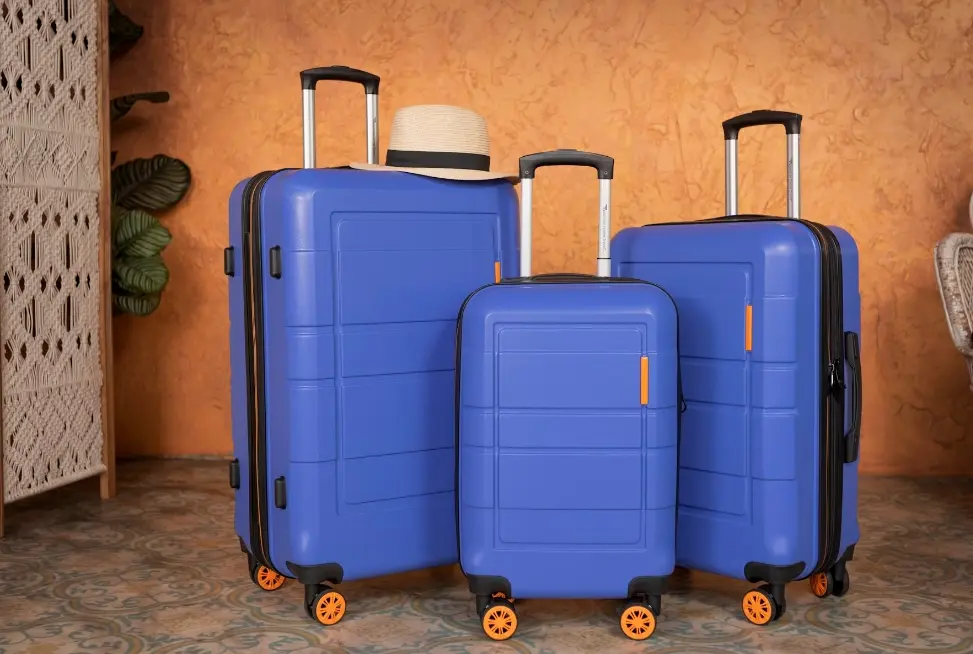
Certifications Required for Exporting Bags to the EU and the USA
If you are selling the following types of bags and are unsure about the requiRED certifications, this guide provides detailed information:
- Leather Bags
- Wallets
- Handbags
- Backpacks
- Children's Backpacks
- Other bag products

For the North American Market
California Proposition 65
California Proposition 65, also known as the 1986 "Safe Drinking Water and Toxic Enforcement Act," aims to protect Californians from harm caused by exposure to certain chemicals. The key requirements include:
1. Prohibition of unrestricted use of listed chemicals in consumer goods without proper warnings.
2. Prohibition of intentional release of these chemicals into drinking water sources.
Scope of Restrictions
Covers over 800 chemicals and heavy metals. Bags and other products (e.g., wallets, suitcases, accessories) with excessive levels of these chemicals cannot be sold in California.
Risk Substances
- Materials: Leather, PU leather, and coatings may contain heavy metals or phthalates.
- Hardware Components: Zippers, buttons, and other accessories may contain lead, cadmium, or other heavy metals.
Applicable Product Categories
- Food Contact Materials: BPA in coatings, phthalates (e.g., DEHP) in plastic components.
- Apparel: Flame retardants may contain PFOA.
- Toys and Children's Products: Phthalates like DEHP, DINP in plastics.
- Electronics: May contain lead and other heavy metals.
- Furniture: Formaldehyde or phthalates in materials like plywood or plastic.
CPC Certification - cpsia
The Consumer Product Safety Improvement Act (CPSIA) regULates children's products sold in the U.S. Bags intended for children under 12 years old fall under this regulation.
Applicable Standards
- astm f963-17: Surface coating material testing, soluble metal testing, small object testing, etc.
- Testing for Filling Materials: Ensures materials are non-toxic and safe.
Children’s Product Certificate (CPC)
The CPC is a mandatory document that must include:
1. Company and supplier information.
2. Applicable product standards.
3. Details of the CPSC-approved testing lab.
Tracking Label Requirements
Must include:
- Importer information.
- Country of origin.
- Production date and batch number.
- Country of manufacture.
Textile Labels
Textile bags exported to the U.S. must include a permanent textile label displaying:
1. Fiber Content (e.g., 100% cotton).
2. Care Instructions.
In addition, country of origin and compliance marks may need to be printed on the product packaging.
For the European Market
reach regulation
REACH is a chemical testing regulation that restricts the use of harmful chemicals and pollutants in all consumer goods sold in the EU, including bags. It applies to all materials such as textiles, leather, nylon, polyester, etc.
Examples of Restricted Substances
- Lead
- Cadmium
- Mercury
- Azo Dyes
Importers must ensure that materials in their products comply with substance limits.
General Product Safety Directive (GPSD)
GPSD establishes basic safety standards for all products sold in the EU, including bags.
Relevant EN Standards
- EN 14362: Testing for certain aromatic amines in azo dyes.
- EN 16483: Labeling requirements for leather trims in textile products.
Directive 94/62/EC: Packaging Regulations
The Packaging Directive restricts the presence of certain heavy metals (e.g., Hg, Pb, Cr6+, Cd) in packaging materials and requires:
1. Registration with member state authorities.
2. Reporting and recycling of packaging materials.
E-Commerce Platform Requirements
Platforms like Amazon and TEMU require packaging registration. Without registration, sellers cannot create shipping plans.
gpsr (EU Representative Registration)
Effective December 13, 2024, all products must designate an EU Responsible Person (EU Rep) and display relevant labeling on the packaging.
Labeling Requirements
All bag products containing at least 80% textile fibers by weight must have a permanent label indicating:
1. Fiber Composition (e.g., 100% polyester).
2. EU Representative Information.
Email:hello@jjrlab.com
Write your message here and send it to us
 WEEE Registration for Waste Electrical &Electr
WEEE Registration for Waste Electrical &Electr
 MSDS Chemical Safety Testing
MSDS Chemical Safety Testing
 What Are the Differences Between UK REACH and EU R
What Are the Differences Between UK REACH and EU R
 E-Cigarette GB 41700 Compliance Testing
E-Cigarette GB 41700 Compliance Testing
 What Are the Testing Items of California Propositi
What Are the Testing Items of California Propositi
 E-Cigarette EU TPD Testing
E-Cigarette EU TPD Testing
 Testing Certification for E-cigarettes Exported to
Testing Certification for E-cigarettes Exported to
 What is Amazon US CPC Certification?
What is Amazon US CPC Certification?
Leave us a message
24-hour online customer service at any time to respond, so that you worry!




